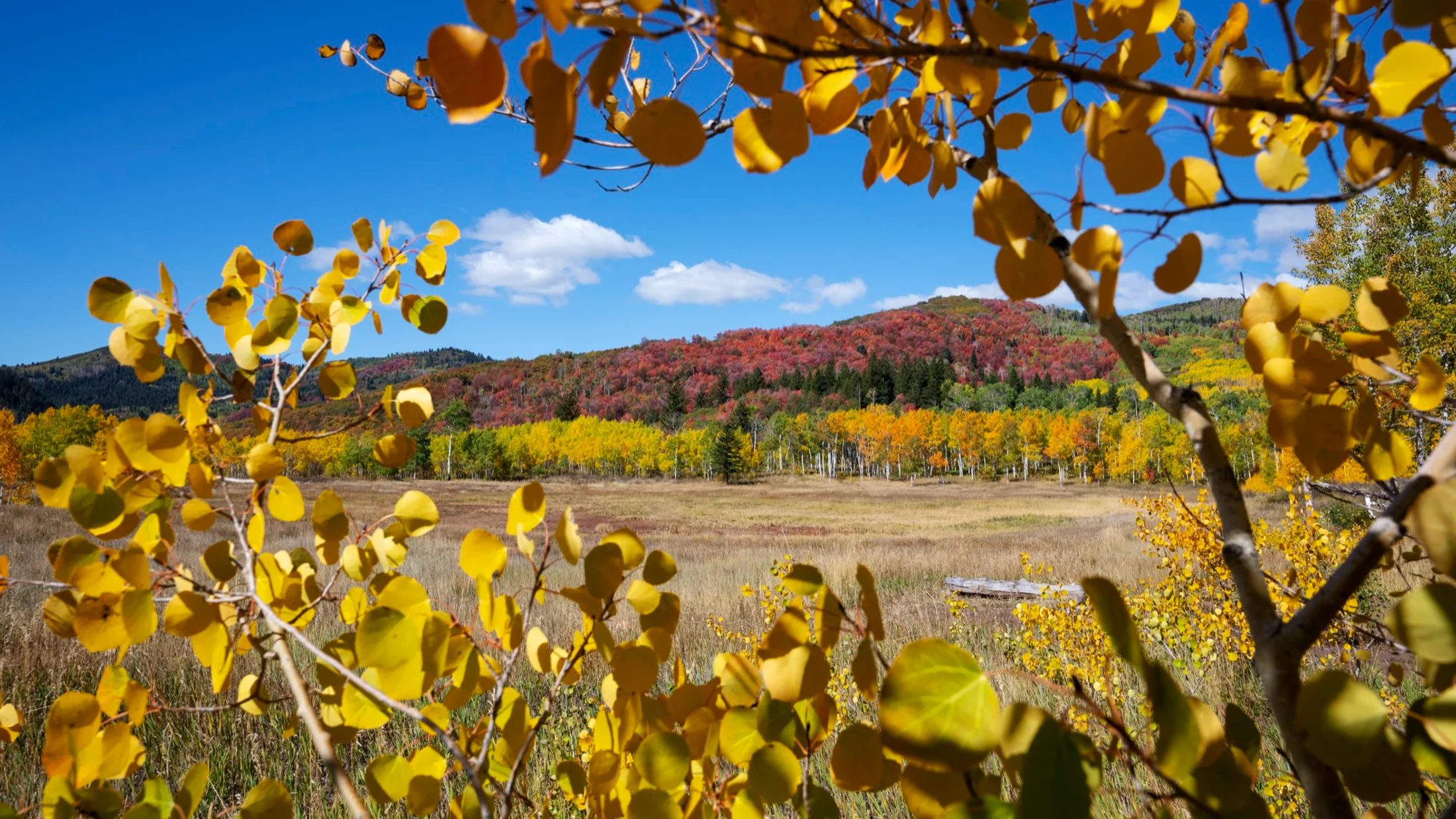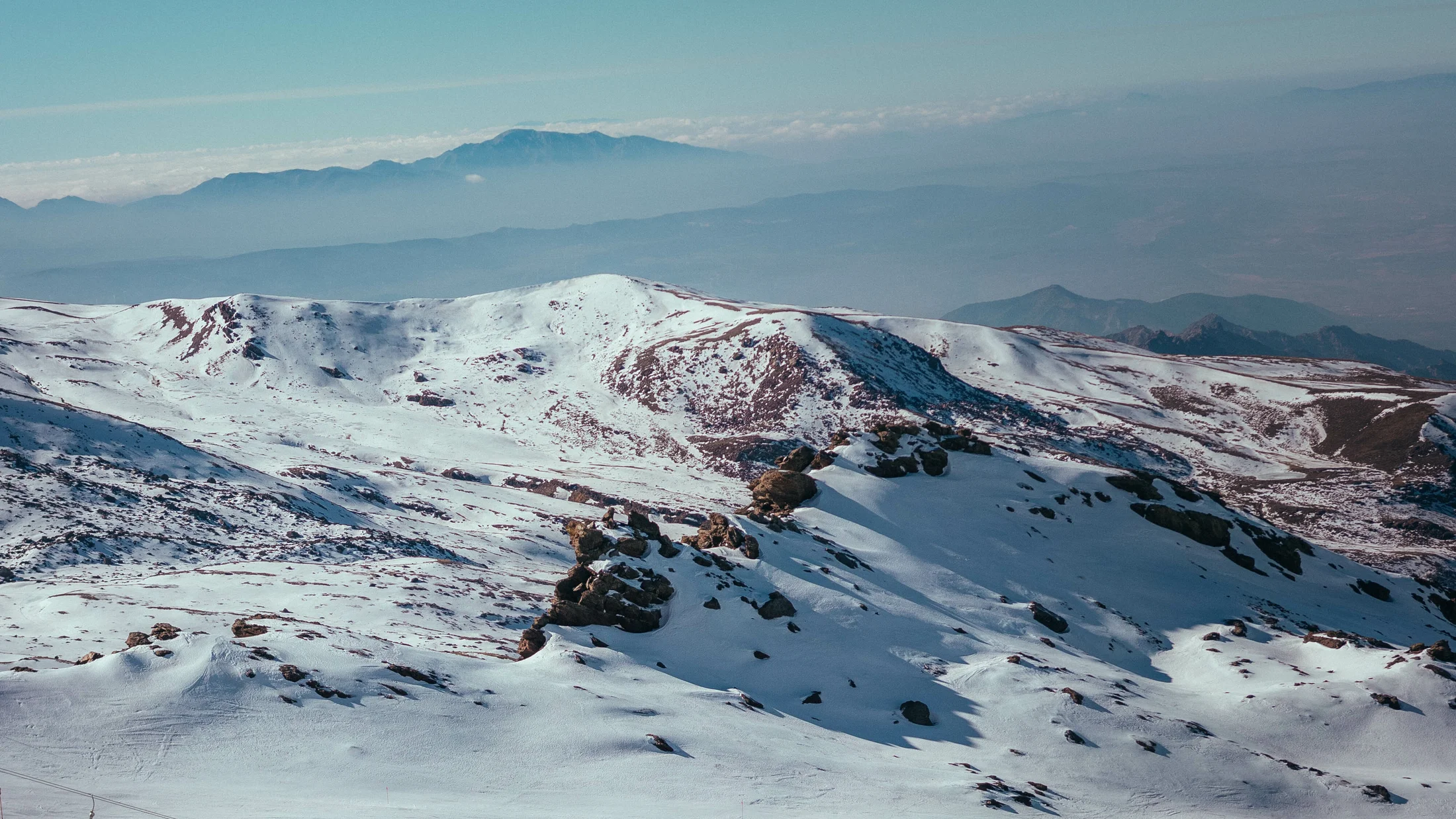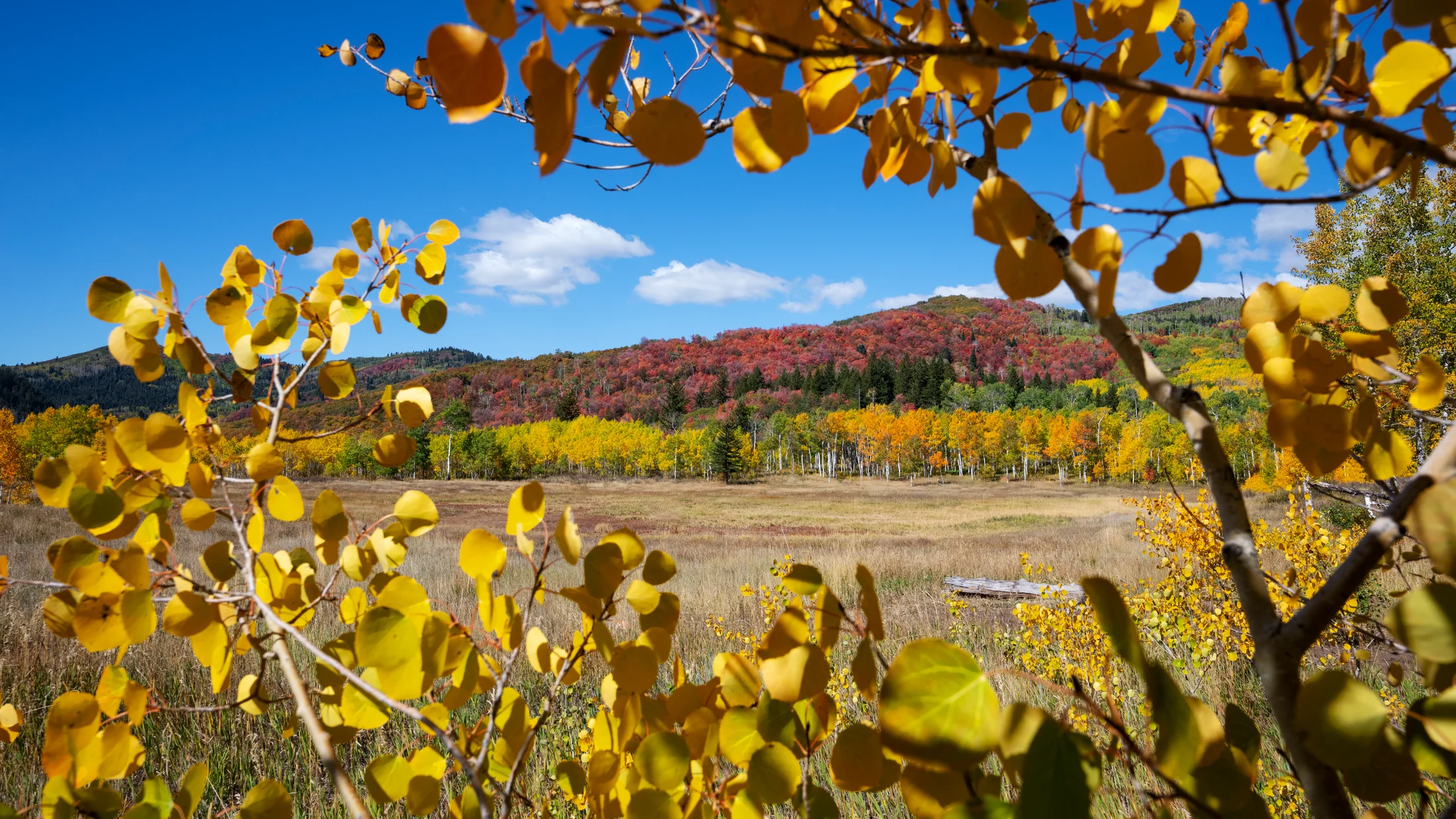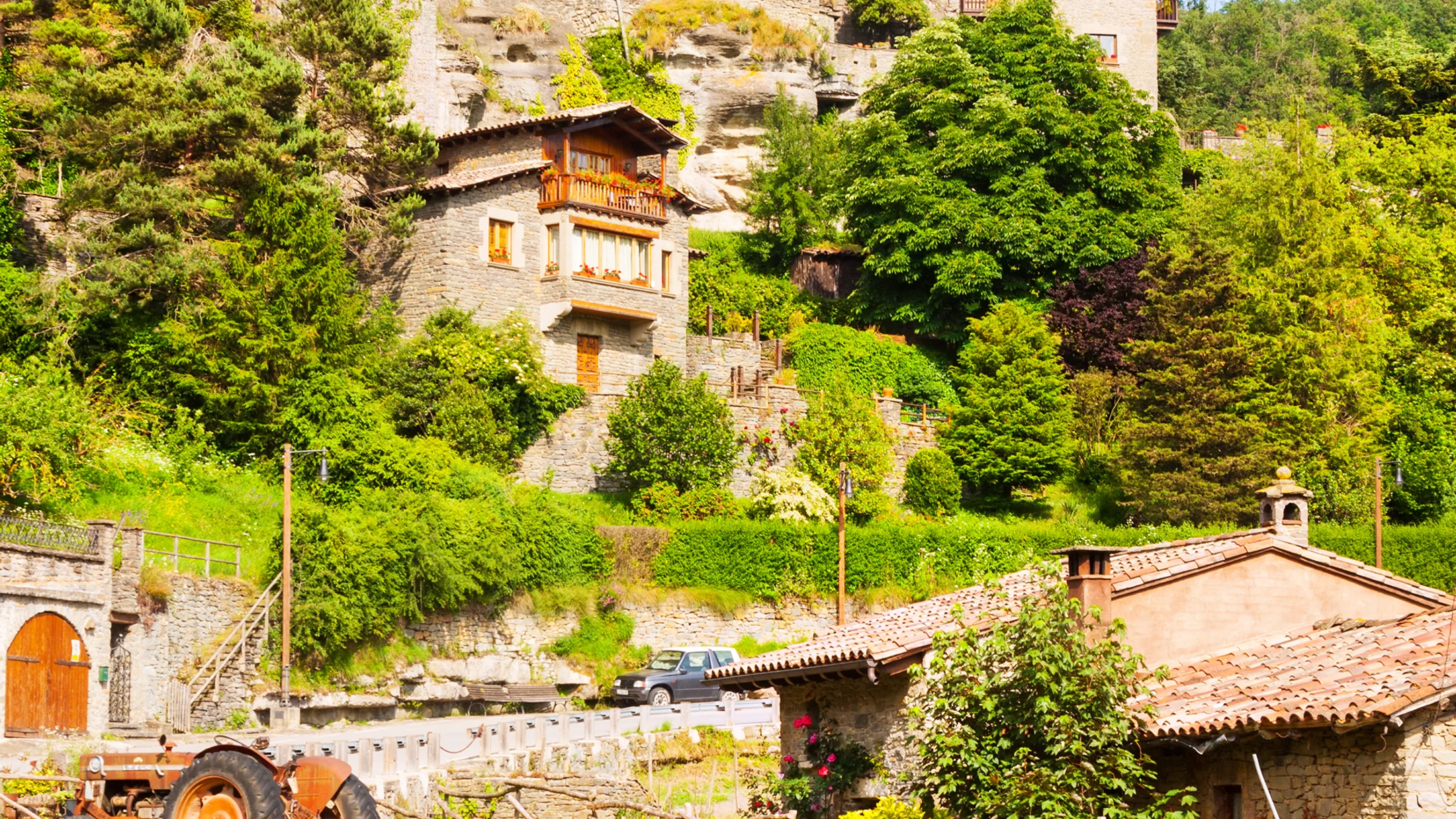December Long Weekend 2025: 15 Perfect Countryside Escapes (Spain)
The December long weekend 2025 falls from the 6th to the 8th, three days that can become your perfect excuse to disconnect. While cities fill with Christmas lights and crowds, the countryside awaits you with frost-covered forests, villages where smoke rises from chimneys, and trails you can walk without seeing another soul.
Countryside escapes in December have something special: the cold awakens your sense of refuge, mountains dress in white, and sunsets last longer. It's the perfect moment to explore without rushing, discover charming villages, and taste the gastronomy of each region. Plus, booking early guarantees you better options and tighter prices.
In this guide you'll find 15 countryside escapes spread across Spain. Each one is designed for a different profile: couples seeking intimacy, families craving nature, groups of friends ready for adventure. They all have something in common: they let you experience the most authentic December, far from the noise.
The Best Countryside Escapes by Area
1. Sierra de Madrid (Near Madrid, Toledo, Ávila)
Less than two hours from the capital, Sierra de Madrid offers accessible mountains, historic villages, and trails for all levels. December here smells of burning wood and that silence only found by those who venture into the valleys.
Escape 1: Villages of Sierra Norte
Rascafría, La Hiruela, Patones de Arriba. These villages seem frozen in time. Stone houses huddle against the cold, cobbled streets climb and descend between small squares. The Hayedo de Montejo, one of Madrid's few beech forests, turns ochre and copper even in December.
You can walk to El Paular Monastery, try the cocido stew in some inn in Rascafría, or simply get lost in La Hiruela, a village of black architecture where barely 50 people live. Rural houses with fireplaces are the perfect refuge for December nights. Ideal for couples and families seeking tranquility.
What to do: Hiking through Valle del Lozoya, visit to Hayedo de Montejo (advance booking required), route through charming villages.
Accommodation: Rural houses with fireplaces in Rascafría and La Hiruela.
Escape 2: Valle del Tiétar (Ávila)
This valley has a microclimate that makes it warmer than the rest of the province. In December, while the plateau shivers with cold, here the days can be surprisingly mild. The Tiétar river winds between orchards, chestnut groves, and villages like Arenas de San Pedro or Candeleda.
It's territory of isolated cabins, perfect for disconnecting from your phone and reconnecting with yourself. You can walk to the Cuevas del Águila, bathe in the pools of Nogal del Barranco (if you dare with the icy water), or simply sit by the fireplace with a book. Local gastronomy shines: judías del Barco beans, Ávila beef, goat cheeses.
What to do: Hiking through gorges and pools, visit to Arenas de San Pedro, wine tourism at local wineries.
Accommodation: Isolated cabins in the heart of nature.
Ideal profile: Couples seeking digital disconnection and absolute tranquility.
2. Aragonese and Catalan Pyrenees
The Pyrenees in December is pure mountain. Snow already crowns the highest peaks, glacial lakes reflect incredibly blue skies, and the air is so clean it seems sharp. It's territory for those who love walking with crampons or simply contemplating the grandeur of the landscape.
Escape 3: Benasque Valley
Benasque is the village that opens the door to the highest Pyrenees. From here you can approach Aneto, the highest peak in the Pyrenees, although in December the summit is reserved for experienced mountaineers. What you can do is walk to the Cregüeña glacial lake, visit the La Renclusa refuge, or explore the valleys of Estós and Vallibierna.
Mountain refuges and traditional village houses preserve that Pyrenean spirit: hearty food, friendly people, mountain stories. At night, the sky fills with stars you can almost touch.
What to do: Winter hiking with snowshoes, visit to glacial lakes, route through Pyrenean valleys.
Accommodation: Mountain refuges and traditional houses in Benasque.
Ideal profile: Adventurers and groups of friends with mountain experience.
Escape 4: La Cerdanya
La Cerdanya is a region divided between Spain and France, a sunny valley surrounded by mountains. Here you'll find medieval villages like Llívia (a Spanish enclave in French territory), natural thermal baths, and rural farmhouses converted into charming accommodations.
In December, you can combine gentle hiking along the Camí dels Bons Homes with afternoons relaxing in thermal waters. The gastronomy is a mix of Catalan and French influences: trinxat de la Cerdanya, tupina, shepherd's cheeses. It's a perfect escape for families who want nature without sacrificing comfort.
What to do: Medieval villages, natural thermal baths, hiking along Camí dels Bons Homes.
Accommodation: Rural farmhouses with spa and fireplace.
Ideal profile: Families and couples seeking wellness and rest.
3. Castilla y León
Castilla y León is Spain's largest region and also one of the most unknown. Here hide medieval villages, wild mountain ranges, and vineyards that in December look like charcoal paintings. It's land of silence, wide horizons, and hearty gastronomy.
Escape 5: La Alberca and Las Batuecas (Salamanca)
La Alberca is one of those villages that seems pulled from a fairytale. Houses have timber frames, balconies full of flowers (even in December), and cobbled streets that zigzag upward. It's declared a Historic-Artistic Site and forms part of Las Batuecas-Sierra de Francia Natural Park.
From here you can explore the Valley of Las Batuecas, a place of deep forests and hidden hermitages where anchorites lived for centuries. The route to Peña de Francia rewards you with views of the entire mountain range. At night, try the hornazo, farinato, or bollo maimón at some traditional inn.
What to do: Walk through La Alberca, hiking through Las Batuecas, visit to Peña de Francia.
Accommodation: Traditional inns with fireplaces and local architecture.
Ideal profile: Senior couples and lovers of culture and heritage.
Escape 6: Ribera del Duero (Burgos)
Ribera del Duero in December is a landscape of bare vineyards, leaden skies, and underground wineries preserving centuries of history. It's the perfect escape for those who enjoy combining nature, culture, and gastronomy.
You can tour villages like Peñaranda de Duero, Roa, or Aranda de Duero, visit historic wineries (many offer tastings and wine tourism experiences even in winter), and try the roasted lechazo lamb in wood ovens. Some winery hotels let you stay among barrels, wake up to vineyard views, and learn everything about the winemaking process.
What to do: Wine tourism, winery visits, roasted lechazo tasting, medieval village route.
Accommodation: Winery hotels with wine experiences.
Ideal profile: Foodies, couples, and wine lovers.
4. Rural Andalusia
Andalusia isn't just beaches. The interior hides green mountain ranges, immense natural parks, and white villages hanging from impossible hillsides. In December, while the coast receives tourists seeking sun, Andalusian mountains await you with calm and authenticity.
Escape 7: Alpujarras (Granada)
Las Alpujarras are a unique territory. White villages like Pampaneira, Bubión, or Capileira cling to the slopes of Sierra Nevada. Houses have flat roofs, tinaos (covered passages), and chimneys that smoke non-stop in December.
You can walk through ravines, visit artisan workshops (there are weavers, potters, ham makers), try the plato alpujarreño (papas a lo pobre, blood sausage, fried egg, chorizo) in some inn. Many accommodations are converted farmhouses or even caves carved into the mountain, cool in summer and surprisingly warm in winter.
What to do: Hiking through ravines, visit to white villages, local gastronomy, artisan workshops.
Accommodation: Rural farmhouses and cave houses.
Ideal profile: Groups of friends, bohemians, lovers of alternative culture.
Escape 8: Sierra de Cazorla (Jaén)
Sierra de Cazorla is Spain's largest natural park and one of the most unknown. Here the Guadalquivir river is born, there are pine, oak, and gall oak forests, and wildlife including deer, wild boar, mountain goats, and griffon vultures.
In December, the park is quiet. You can walk to the source of the Guadalquivir, visit villages like Cazorla or La Iruela (with its castle hanging over a cliff), or simply drive through roads winding between mountains. Eco rural houses are increasingly common here, many run on solar energy and offer organic food.
What to do: Hiking through the natural park, visit to the source of Guadalquivir, wildlife watching.
Accommodation: Certified eco rural houses.
Ideal profile: Families with children, nature and sustainability lovers.
5. Green Galicia
Galicia in December is intense green, fine rain, mists tangling in forests. It's a region of manor houses, monasteries, powerful rivers, and an Atlantic coast that leaves no one indifferent. Galician gastronomy, with its seafood, empanadas, and broths, is the best antidote against the cold.
Escape 9: Ribeira Sacra
Ribeira Sacra is a territory where the Sil and Miño rivers have carved vertical canyons. On impossible slopes grow terraced vineyards that seem impossible to work. Among the forests hide Romanesque monasteries: Santa Cristina de Ribas de Sil, San Esteban de Ribas de Sil, Santo Estevo de Ribas de Sil.
You can navigate by catamaran through the Sil canyons, walk trails bordering the river, visit wineries where mencía grape wine is made, and stay in a pazo (Galician manor house) converted into a rural hotel. The landscape in December is melancholic, beautiful, almost mystical.
What to do: Catamaran through Sil canyons, visit to Romanesque monasteries, wine tourism.
Accommodation: Manor houses and stone houses with history.
Ideal profile: Romantic couples, heritage and wine lovers.
Escape 10: Costa da Morte (A Coruña)
Costa da Morte is called that for a reason: here the Atlantic strikes hard, cliffs are vertical, and lighthouses stand like sentinels. In December, the ocean shows its wildest face. Waves break with thunder, wind sways eucalyptus trees, and seagulls glide over rocks.
You can visit Finisterre Lighthouse (where Romans believed the world ended), walk to Cabo Vilán, explore fishing villages like Muxía or Camariñas, and try the best seafood in Galicia at any port seafood restaurant. Maritime houses converted into accommodations preserve that flavor of salt and adventure.
What to do: Lighthouse route, hiking along cliffs, local seafood restaurants.
Accommodation: Maritime houses with Atlantic views.
Ideal profile: Adventurers, foodies, and ocean lovers.
6. Unknown Extremadura
Extremadura is one of Spain's most depopulated and surprising regions. It has endless dehesas, crystalline gorges, villages with medieval Jewish quarters, and gastronomy based on Iberian pork, migas, and artisan cheeses. December here is cold and dry, perfect for walking without stress.
Escape 11: Valle del Jerte
Valle del Jerte is famous for cherry blossom in spring, but in December it has another charm. The gargantas (mountain streams) run frozen, villages like Hervás preserve their medieval Jewish quarter, and chestnut forests show their autumn colors well into winter.
You can walk to the Garganta de los Infiernos, visit natural pools (too cold to bathe, but beautiful to contemplate), tour Hervás calmly, or try preserved cherries sold in all shops. Some rural houses have heated pools, perfect for taking a dip after walking in the cold.
What to do: Hiking through gorges, visit to Hervás, route through valley villages.
Accommodation: Rural houses with heated pool.
Ideal profile: Families, couples, and groups seeking disconnection.
7. Asturias and Cantabria
Northern Spain is green, rainy, mountainous. Asturias and Cantabria share the Picos de Europa, a massif of limestone mountains with vertical walls, beech forests that seem enchanted, and valleys where Tudanca breed cows graze. Northern gastronomy (fabada, cocido montañés, cheeses, cider) is ideal for December's cold.
Escape 12: Picos de Europa (Asturias)
Picos de Europa are one of Spain's most iconic mountains. Naranjo de Bulnes (Urriellu for Asturians) is the massif's symbol, a rock needle defying gravity. Lagos de Covadonga, two glacial lakes surrounded by mountains, are a must-visit although in December they may be covered in snow.
From villages like Potes, Cangas de Onís, or Bulnes (which can only be reached on foot or by funicular) you can organize hiking routes, visit the Royal Site of Covadonga, or simply enjoy cider and Cabrales cheese at any cider house. Village houses are traditional Asturian accommodations, cozy and full of character.
What to do: Hiking around Lagos de Covadonga, visit to Naranjo de Bulnes (mountaineers only in winter), village route.
Accommodation: Traditional village houses.
Ideal profile: Groups of friends, hiking and mountain lovers.
Escape 13: Liébana (Cantabria)
Liébana is a Cantabrian valley protected by mountains, giving it a unique microclimate. Here vineyards and orchards are cultivated, and one of Spain's most famous spirits is produced: orujo. The Monastery of Santo Toribio de Liébana is one of Christianity's holy places, guarding a piece of the Lignum Crucis (Christ's cross).
You can visit the monastery, tour villages like Potes (capital of the region), try quesadas (local dessert) and cocido lebaniego, and walk routes like the La Hermida gorge. Rural inns offer warm hospitality and hearty food.
What to do: Visit to Santo Toribio Monastery, tasting of orujo and quesadas, hiking through gorges.
Accommodation: Traditional rural inns.
Ideal profile: Culture, gastronomy, and heritage lovers.
8. Interior Valencia Region
The Valencia Region has coast, yes, but its interior is mountainous, wild, and surprising. The Els Ports region, in Castellón, is territory of via ferratas, medieval villages, and oak and pine forests that in December smell of wet earth.
Escape 14: Els Ports (Castellón)
Els Ports is a border region between Valencia, Catalonia, and Aragon. The most famous village is Morella, a walled medieval town rising on a hill crowned by a castle. Walking its streets is like going back in time: Gothic arches, convents, walls embracing the village.
If you like adventure, here are via ferratas of different levels, hiking routes through ravines, and natural viewpoints. Restored masías (traditional Valencian country houses) are perfect accommodations for families with teenagers seeking activity and comfort.
What to do: Visit to Morella, via ferrata, hiking through ravines.
Accommodation: Restored farmhouses with adventure activities.
Ideal profile: Families with teenagers, active groups.
9. Interior Aragon
Aragon has much more than the Pyrenees. The interior of Huesca province hides mountain ranges like Guara, a paradise for canyoning, hiking, and climbing. In December, water activities diminish, but the landscape remains spectacular.
Escape 15: Sierra de Guara
Sierra de Guara is known for its canyons and ravines, but in winter it transforms into a quiet hiking destination. You can walk routes like the Salto de Bierge, visit villages like Alquézar (with its medieval collegiate church hanging over a ravine), or explore the cave paintings of Río Vero Cultural Park.
Some active tourism houses offer easy-level canyoning in winter (with wetsuit), but most visitors prefer walking routes, landscape photography, and evenings by the fireplace.
What to do: Hiking through canyons, visit to Alquézar, cave paintings, gentle canyoning (optional).
Accommodation: Active tourism houses with specialized guides.
Ideal profile: Groups of friends, gentle adventure.
Tips for Booking Your Long Weekend Escape
The December long weekend is one of the most popular of the year. Many people take advantage of these three days to flee the city, which means accommodations fill up fast. 68% of rural houses in Spain are booked more than six weeks in advance for holiday weekends.
Here are some practical tips:
Book at least 6-8 weeks in advance. By October you should already be searching for options. The sooner you book, the more variety you'll have and the better prices you'll find.
Check flexible cancellation policies. The weather in December can be unpredictable (snow, heavy rain) and you might need to change plans. Make sure your booking allows free cancellation or date changes.
Compare prices and options in one place.
Read reviews from other travelers. Reviews give you real information about the accommodation's condition, hosts' attention, and overall experience. Don't trust photos alone.
Ask about specific services. Do you need powerful heating? Fireplace? Baby crib? Do they allow pets? Confirm these details before booking to avoid surprises.
What to Pack for Your December Countryside Escape
Preparing your backpack for a countryside escape in December is an art. Neither too much weight nor falling short. Here's a checklist based on years of experience walking through mountains in winter:
Warm clothing in layers
The key is the layering system: first thermal layer that absorbs sweat, second layer that insulates (fleece or down), and third waterproof layer that protects from wind and rain. This way you can adapt to temperature changes without getting cold or sweating too much.
- Thermal shirt (merino wool or synthetic fabrics, not cotton)
- Fleece or down jacket
- Waterproof jacket like Gore-Tex
- Mountain pants (ideally with water-repellent fabric)
- Hat, gloves, and neck buff
- Thermal socks (bring a spare pair)
Waterproof trekking footwear
Mountain boots are essential if you're going to walk on trails. In December many paths are muddy, there are puddles, snow in high areas. Boots with waterproof membrane (Gore-Tex type) and good grip sole make the difference between enjoying and suffering.
If your escape is quieter (villages, cultural visits, gastronomy), light trekking shoes might be enough.
Checklist by activity
For hiking:
- 20-30 liter backpack
- Trekking poles (help on descents and irregular terrain)
- Light crampons or chains if there's snow/ice
- Headlamp or flashlight (in December it gets dark around 6:00 PM)
- Thermos with hot drink
- Energy snacks (nuts, bars, chocolate)
- Basic first aid kit (band-aids, painkillers, sunscreen)
- Map or GPS (don't rely only on your phone, mountain coverage fails)
For cultural/gastronomic escapes:
- More urban but warm clothing
- Small backpack or bag to carry camera, water, guides
- Umbrella or light raincoat
For families with children:
- Extra change of clothes for the little ones
- Enough snacks and water
- Travel games or stories for waiting moments
- Baby carrier backpack if the child is very young
Frequently Asked Questions
When to book for the December long weekend?
Ideally book between October and early November, meaning at least 6-8 weeks in advance. The most popular accommodations (houses with fireplaces, isolated cabins, winery hotels) sell out quickly. If you wait until the last minute, you'll find fewer options and higher prices.
Is it very cold in countryside escapes in December?
Depends on the area. In the Pyrenees, Picos de Europa, or Sierra de Guadarrama you can find snow and temperatures below zero, especially at night. In Andalusia (Alpujarras, Cazorla), Extremadura, or Ribera del Duero the cold is moderate, with sunny days around 10-15°C. In Galicia and Asturias it rains a lot, but temperatures are mild (5-12°C).
General recommendation: bring warm clothing in layers and prepare for any weather. December is unpredictable.
Are there activities for children in these escapes?
Yes, many of the escapes we've proposed are ideal for families. Valle del Jerte, Sierra de Cazorla, La Cerdanya, Els Ports, and Sierra Norte de Madrid have easy hiking routes, charming villages to explore, educational activities (wildlife watching, artisan workshops), and accommodations adapted for children.
Avoid very technical areas like Benasque Valley or Costa da Morte if traveling with small children, unless you have mountain or rugged coast experience.
Do I need a car for these escapes?
In most cases, yes. Public transport to rural areas is usually limited, with few schedules and complicated connections. A car gives you freedom to move between villages, reach trail starting points, and explore at your own pace.
That said, some escapes like Sierra Norte de Madrid (bus from Plaza de Castilla) or Picos de Europa (bus to Cangas de Onís) are accessible by public transport. Once there, you can move on foot or hire local taxis.
The December long weekend 2025 is the perfect excuse to reconnect with nature, discover villages that seem frozen in time, and try the best gastronomy of each region. The 15 escapes we've proposed cover all of Spain: from snowy Pyrenees to Andalusian mountain ranges, passing through Castilian vineyards, Galician forests, and Asturian mountains.
Each one has its personality, its landscape, its way of experiencing rural December. The important thing is choosing the one that best fits you: whether you seek adventure, tranquility, culture, gastronomy, or simply a place to disconnect.
Remember that the December long weekend is one of the busiest of the year. Accommodation availability is limited and prices rise as the date approaches. Booking now guarantees you better options, tighter prices, and the peace of mind of having your escape organized.
The countryside awaits you. You just have to decide which mountain, which valley, which village you want to discover.



